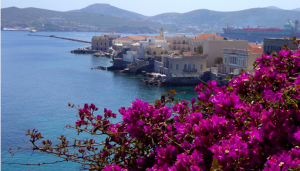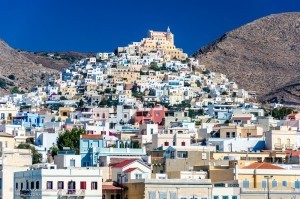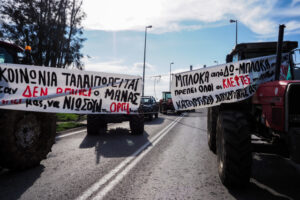Ermoúpoli (meaning “the city of Hermes”) is the island’s capital town and has been the first important trade and industrial centre of the country in the 19th century. Evidence of this glorious past can be seen on public buildings (the City Hall, the Customs Office, “Apollo” theatre), on the neoclassical houses and at the beautiful squares. Due to its economic activity, Ermoúpoli has been called “Manchester of Greece” and the history of its years of blossom is exhibited in the Industrial Museum.
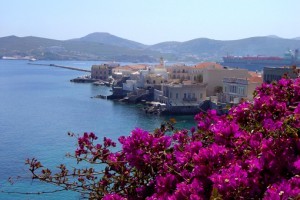
The Orthodox community has contributed some outstanding religious monuments to the architecture of Ermoúpoli such as the churches of Metamórphossi tou Sotíros (Transfiguration of Jesus Christ), St Nicolas the Rich (Áyios Nikólaos Ploússios), Dormition of the Mother of God (Koímissis tis Theotókou).
The medieval quarter of the Roman Catholic community and the fortress-like St George’s cathedral are on St George hill, also named Áno Sýros (meaning upper Sýros). Go up the stairs to the top of the hill and through the narrow streets, by the traditional whitewashed houses, the archways and the open spaces with a breathtaking view of the island.
The great number of beautiful beaches will delight the sea and sand lovers: Vári, Foínikas, Yalissás and Kíni, as well as Possidonia or Dellagrazia, the beach of a village with many neoclassical mansions with colourful orchards.
Sýros is well-known for its gastronomic peculiarities. Halva pie (a pie made of thyme honey and roasted almonds), loukoúmi (a delight made of water, starch and sugar), “loosa” ham, fennel sausages and the San Mihalis spicy cheese (appellation d’origine contrôlée/”protected designation of origin”) will no doubt satisfy even the most demanding taste buds.
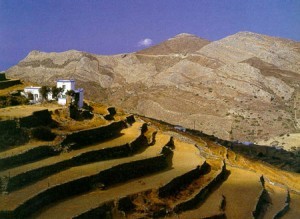
Internationally acclaimed festivals are held on Sýros, offering a wide range of choices and covering any taste, e.g. The International Cyclades Music Festival, the Classical Music Festival, the Ermoupólia and the Musical May.
Source: visitgreece.gr
Ask me anything
Explore related questions
